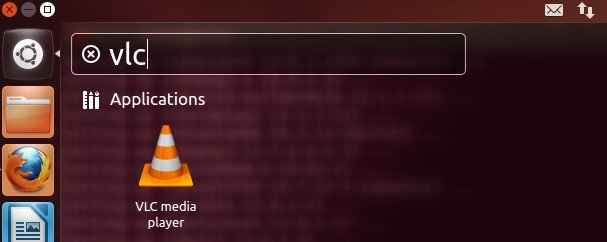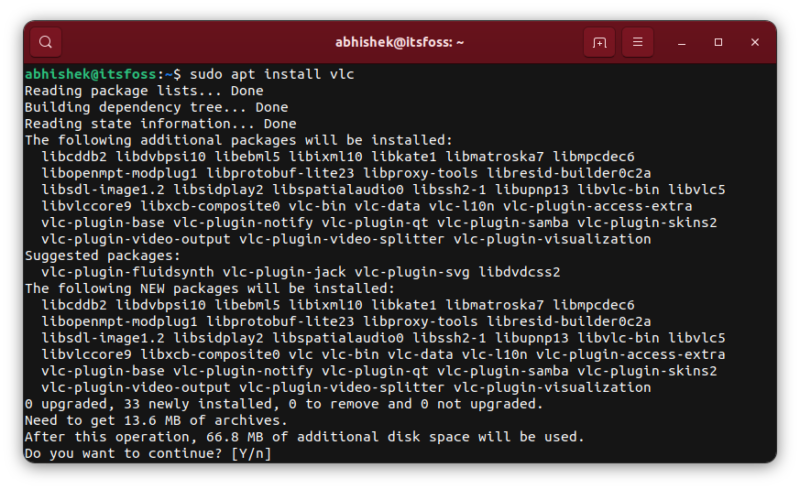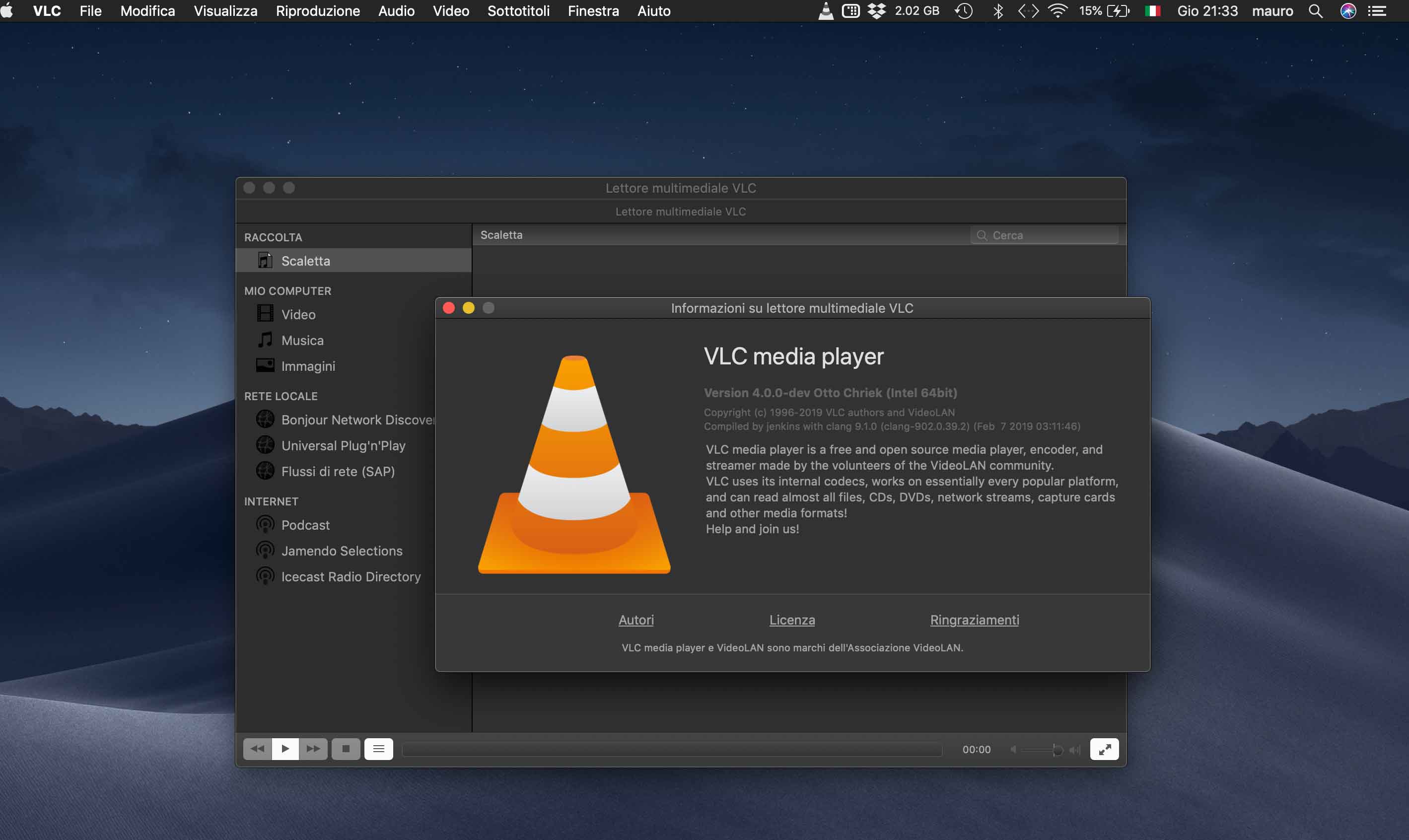
- #Sudo apt get install vlc vlc plugin esd mac os#
- #Sudo apt get install vlc vlc plugin esd update#
- #Sudo apt get install vlc vlc plugin esd driver#
- #Sudo apt get install vlc vlc plugin esd portable#
- #Sudo apt get install vlc vlc plugin esd Bluetooth#
I’m not yet sure what the "02" and "15" signify, but as I say, the Proximity UUID, Major and Minor values, and the power level complete the 26 octets of manufacturer data - and the 30 octets of the entire advertising data.
#Sudo apt get install vlc vlc plugin esd Bluetooth#
The Bluetooth 4.0 specification says the next two octets have to expose the manufacturer: the "4C 00" is Apple’s Bluetooth manufacturer ID. ‘1A’ says the next group is 26 octets long, and the "FF" identifies the group as manufacturer-specific data. The next octet, "01" says the advertising octet(s) following are Bluetooth flags, and the "1A" is the binary value derived when certain of those flags are set. In my example, the first "02" in the sequence says the first block of ad data is two octets long. You can put as many of these groups into the advertising data packet as you can fit into the 31 octets allowed. It’s followed by a single octet which defines the type of data, and then any number of octets holding the data itself. The ad data is split into groups, each formatted with a single octet providing the number of remaining octets in the group - essentially it tells the Bluetooth sub-system how further along the list of octets is the next group.

The non-significant part should only comprise pairs of zeroes to take the number of octets up to 31 and which, to save power, are not transmitted. The first "1E" is the number of “significant” octets in the advertising data that follow, up to a maximum of 31.

The "0x08" is the Bluetooth command group - the "OGF" in the official parlance - and "0x0008" is the specific command ("OCF"), HCI_LE_Set_Advertising_Data. This is how you decode the command: the "hci0" identifies your Bluetooth dongle, "cmd" tells hcitool to send the following command data to the device. usr/bin/hcitool -i hci0 cmd 0x08 0x0008 1E 02 01 1A 1A FF 4C 00 02 15 E2 0A 39 F4 73 F5 4B C4 A1 2F 17 D1 AD 07 A9 61 00 00 00 00 C8 00ġA binary value derived when certain of thos flags are setįF identifies the group as manufacturer-specific data The only other missing piece is that, following the Bluetooth standard, the Manufacturer Specificĭata needs to be preceded by the Company Identifier ( ). TX Power (uint8_t) - This value is used to try to estimate distance based on the RSSI valueįor example, the following is a valid iBeacon payload (separators added for clarity sake): Minor (uint16_t) - The minor value (to differentiate nodes withing one location, etc.) Major (uint16_t) - The major value (to differentiate individual stores, etc.)
#Sudo apt get install vlc vlc plugin esd update#
Inside this field, you need the following values:ĭata Length (uint8_t) - The number of bytes in the rest of the payload = 0x15 (21 in dec)ġ28-bit UUID (uint8_t) - The 128-bit ID indentifying your company/store/etc To install VLC from the command line, open a command line terminal and enter the following apt commands: sudo apt update sudo apt install vlc In addition you might want to install some extra plugins for an additional support of multimedia formats: sudo apt install vlc-plugin-access-extra libbluray-bdj libdvd-pkg All done. # Create an instance of the PyScope class "Destructor to make sure pygame shuts down, etc." Self.screen = _mode(size, pygame.FULLSCREEN) Print "Framebuffer size: %d x %d" % (size, size)
#Sudo apt get install vlc vlc plugin esd driver#
Raise Exception('No suitable video driver found!') Print "I'm running under X display = failed.'.format(driver) # Based on "Python GUI in Linux frame buffer"

"Ininitializes a new pygame screen using the framebuffer" Sed -i '/libgl1-mesa-dev,/d' debian/control Sed -i 's/-disable-x11-shared/-disable-x11-shared -host=armv7l-raspberry-linux-gnueabihf -disable-video-opengl -disable-video-gles -disable-esd -disable-pulseaudio -disable-video-mir -disable-video-wayland -disable-video-x11/' debian/rules Sed -i 's/-disable-x11-shared/-disable-x11-shared -host=armv6l-raspberry-linux-gnueabihf -disable-video-opengl -enable-video-gles -disable-esd -disable-pulseaudio/' debian/rules # would cause it not to find the pi gles development files # we need to add the -host due to dh_auto_configure fiddling with the -build parameter which overrides the config.guess. You need to make sure that you have a “universe” mirror in your /etc/apt/sources.Sudo dpkg -i libsdl2-mixer_2.0.0_b libsdl2-mixer-dev_2.0.0_b
#Sudo apt get install vlc vlc plugin esd mac os#
It is one of the most platform-independent players available, with versions for Linux, Microsoft Windows, Mac OS X, BeOS, BSD, Windows CE, and Solaris. It is able to stream over networks and to transcode multimedia files and save them into various different formats.
#Sudo apt get install vlc vlc plugin esd portable#
It is a highly portable multimedia player that supports many audio and video codecs and file formats as well as DVDs, VCDs and various streaming protocols. The VLC media player is an open source media player, distributed under the GNU General Public License.


 0 kommentar(er)
0 kommentar(er)
